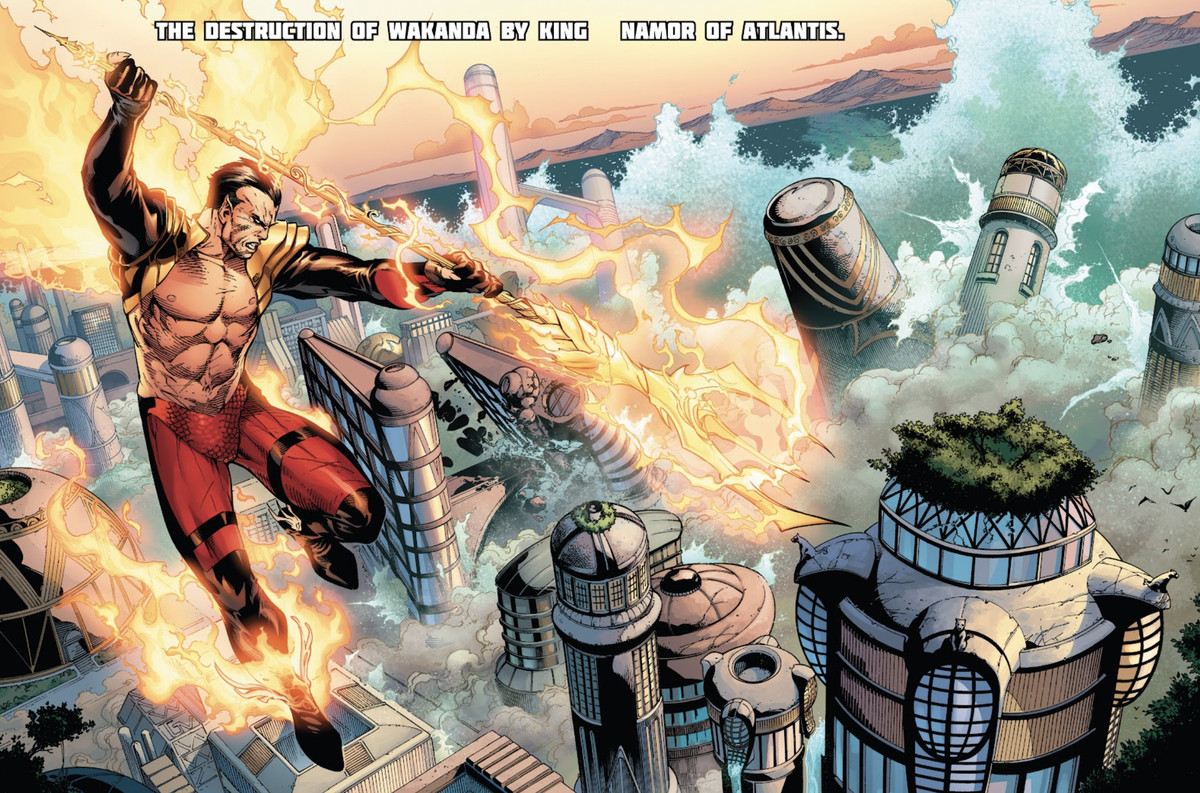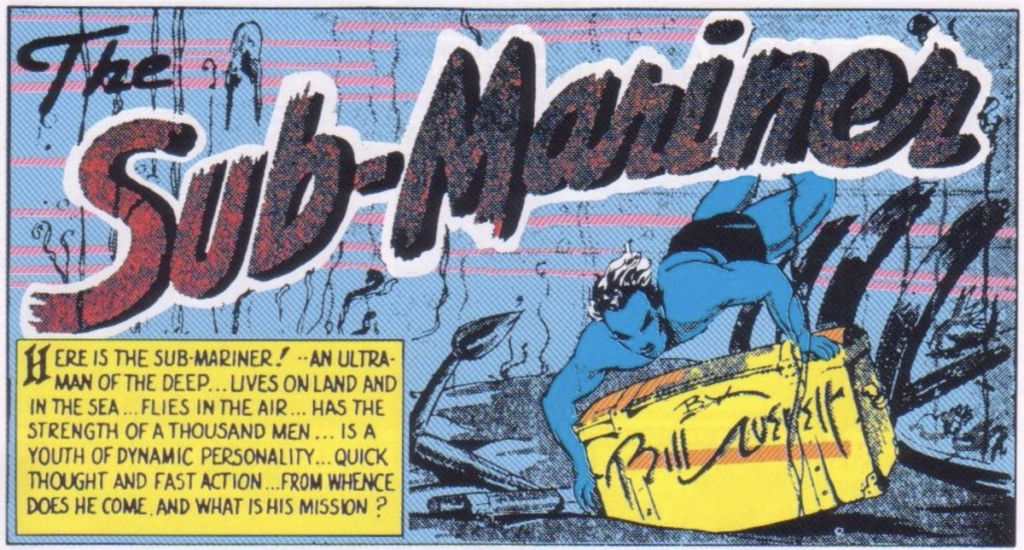In a recent behind-the-scenes teaser for Black Panther: Wakanda Forever, Marvel Studios president Kevin Feige spoke about the significance of the upcoming film, which will become the 30th big-screen installment in the Marvel Cinematic Universe when it’s released in theaters later this week. “All of us very much believe that this feels like the most important movie we’ve ever made,” Feige said. “That is what every crew member focused on every day.”
That weighty statement stems from heightened expectations for the film, which serves as a follow-up to the cultural phenomenon that was 2018’s Black Panther, as well as a tribute to the late Chadwick Boseman following the franchise star’s death in 2020. Within the MCU, Wakanda Forever also bears the responsibility of introducing a new Black Panther and a new ironclad, genius inventor ahead of her upcoming Disney+ series. On top of all that, the sequel will mark the live-action debut of one of the first characters that Marvel Comics ever created: Namor.
Namor’s enduring history in the comics traces so far back that the character was established before Marvel Comics even existed. The first issue that featured Namor the Sub-Mariner, created by writer-artist Bill Everett, was an eight-page origin story that appeared in Motion Picture Funnies Weekly in 1939. That story would be expanded upon later that year when it was included in Marvel Comics no. 1, which was the first publication by Timely Comics—the company that would evolve into Marvel Comics.
As the son of an Atlantean princess and a human explorer, Namor was born an Atlantean prince but was still a product of two worlds, above and below the surface of the ocean. He is considered to be Marvel’s first mutant, with winged ankles that enable him to fly, in addition to superhuman strength and endurance and the abilities to breathe underwater and swim at superhuman speed. During his sprawling, 80-plus-year history in the comics, Namor has fought alongside superhero teams like the Avengers and the X-Men, and was a founding member of the Defenders and the secret organization of heroes recently introduced in Doctor Strange in the Multiverse of Madness, the Illuminati. (That long history even includes his service in World War II propaganda comics, as he fought against Nazis during the 1940s, not to mention issues with titles like “The Sub-Mariner Raps the Japs in the Pacific,” which featured some rather unflattering depictions of Japanese soldiers, to put it lightly. Point being, Namor is old as hell and not all of his history is worth remembering.)
But while Namor often has allied with Earth’s mightiest heroes, he’s also spent plenty of time fighting against them—a crucial point as the character makes his way to the MCU. In addition to being one of Marvel’s first superheroes (along with the original, android Human Torch), Namor also holds the honor of being its first antihero. He’s a frequent rival of the Fantastic Four in particular, but even from his first appearance, the Sub-Mariner shows something of an ambivalence to human life, especially when it comes to humanity’s treatment of the ocean. Namor’s true allegiance has always been to Atlantis. (On that note, one of the most captivating—and terrifying—depictions of Namor is in a 2008 miniseries written by Peter Milligan and wonderfully illustrated by Esad Ribic, Sub-Mariner: The Depths, which follows a scientist’s deep-sea mission to prove the existence of Atlantis in the 1950s. Without giving it all away, the moral of the story is: Don’t mess with Namor.)
Atlantis and Wakanda are two of the most powerful nations in the Marvel Universe, and Namor and T’Challa also have a storied rivalry in the comics; the two proud rulers have alternated between teaming up and opposing each other. One noteworthy event may have forever tipped the scales toward “enemies,” though, as the 2012 crossover series Avengers vs. X-Men featured Namor launching a devastating tidal wave into Wakanda, bringing the sort of catastrophic damage to the nation that arrives at Wakanda’s shores in some of the film’s trailers:

Namor’s status as an antihero makes him the perfect candidate to play the “villain” role in Wakanda Forever, following in the footsteps of Black Panther’s Killmonger. Like Killmonger, Namor is positioned to be much more than the one-dimensional bad guy we see in far too many MCU movies and superhero flicks at large, as he can be an antagonist whom audiences can empathize with. “Introducing Namor for us was really an opportunity to introduce another politician, another sovereign ruler of a group of people who represents more than himself,” director Ryan Coogler explained to Marvel.com.
“Here is a man who believes 100 percent that he is the hero in his own story,” producer Nate Moore added. “He doesn’t see himself as a villain because, in Namor’s eyes, what he is doing he’s doing to protect a people who have already made it through a tragic history.”
Given how extensive Namor’s comics history is, his origins have been rewritten and repurposed by various writers time and time again. It’s only fitting, then, that the MCU versions of Namor and Atlantis will again be reimagined in Wakanda Forever as the character and his kingdom make the transition to the big screen. Atlantis, in fact, is no longer Atlantis. “There have been a lot of representations and creative depictions of Atlantis based off of Plato’s Atlantis, the Greco-Roman concept of a city sunk into the sea,” Coogler told Inverse. “That idea exists in a lot of different ways. We wanted our film to exist alongside those movies and be different.”
Instead of Atlantis, Namor’s underwater kingdom will be Talokan, replacing Atlantis’s Greco-Roman roots with those of ancient Mayan civilizations. “In the Black Panther film we released in 2018, we did the work of making sure the choices we made were culturally specific,” Coogler continued. “We did deep, deep dives and employed academics and consultants to make sure we were getting it right, and representing them with intention and respect. We want to do the same thing when bringing another culture to life. We settled on classic and post-classic Mayan civilizations around the Yucatan region as a base for our story.”
Namor, meanwhile, will become the first Indigenous, Mesoamerican superhero in the MCU. Many elements of the character will remain the same, as evidenced by Namor bounding across the skies with his winged ankles in teasers for the movie, but his origins will be presented in a new light as he becomes Ku’ku’lkán, the Feathered Serpent God. Mexican actor Tenoch Huerta Mejía (Narcos: Mexico, The Forever Purge) steps into the role in his MCU debut, an honor and responsibility that he isn’t taking lightly. “Talokan has a deep meaning to me,” Huerta Mejía explained in a recent promotion for the film. “It’s part of my personal heritage, as a Mexican, as an inhabitant of Mesoamerica. Finally, I could find a more powerful representation of my culture, with dignity and respect.”
The reimagination of Namor is the latest example of Marvel Studios’ increasing efforts to improve representation in the MCU, as more and more superheroes are being played by actors and actresses who aren’t white dudes named Chris. And to Coogler’s point, the decision to create this new version of Atlantis with Talokan and the Talokanil is also fitting for the Black Panther franchise, as it affords Wakanda Forever the opportunity to continue to engage with topics like colonialism, resistance, and the erasure of culture and traditions as its predecessor did. “I hope this movie helps [people] respect the Indigenous population that exists now,” Huerta Mejía told The Los Angeles Times. “They are resisting and they are defending their territories and they are fighting for their autonomy and the right to exist in the way they were existing for the last 1,000 or 2,000 years.”
There are so many other developments at play in Wakanda Forever, as the highly anticipated film also takes on the role of becoming the final installment of Phase 4. But like Killmonger before him, Namor has the chance to elevate the sequel as only the greatest antagonists can—there’s a reason Coogler had his sights set on the character since before Black Panther was released and requested that his long-awaited debut be delayed until its sequel. Namor might be playing the “villain” for now, but Wakanda Forever may be the first of many appearances for Marvel’s first superhero in the years to come.

